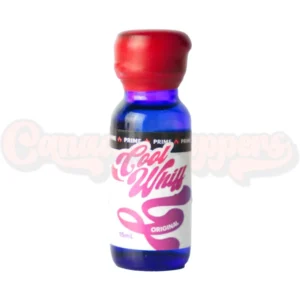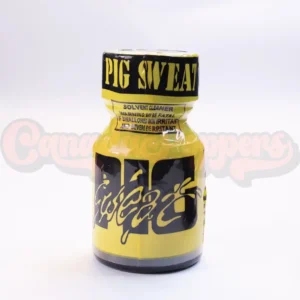Unlocking the Connection: Women and Poppers in Modern Culture
In the vibrant tapestry of modern culture, certain elements quietly entwine themselves into our daily lives, often without us fully recognizing their impact. One such element is the intriguing relationship between women and poppers, a connection that has undergone a fascinating evolution over the years. While traditionally associated with a specific subculture, poppers have slipped into mainstream awareness, sparking conversations about empowerment, curiosity, and modern identity. Understanding this connection not only uncovers layers of cultural dynamics but also challenges societal norms, offering insights into the complexities of gender and personal freedom.
As we delve deeper into this topic, it becomes evident that the narrative surrounding women and poppers is more nuanced than one might initially assume. This isn’t just about trends or fleeting interests; it’s about exploring how these small bottles have become symbols of liberation, pleasure, and resistance in various communities. The story intertwines with themes of self-expression and autonomy, engaging with broader questions about how women navigate spaces traditionally dominated by different forces. Join us on this exploration as we unlock the cultural, historical, and personal facets that shape this unique relationship, and see how women are redefining their roles in an ever-evolving society.
Evolution of Poppers in Modern Culture
Poppers first emerged in the late 19th century as medicinal amyl nitrite, prescribed by physicians for angina relief and other circulatory issues. Their rapid effects on blood vessels soon drew the fascination of club-goers and party scenes. By the 1970s, poppers had firmly planted themselves in underground LGBTQ nightlife, where they became synonymous with dance floors, freedom of expression, and uninhibited joy. Over time, the pungent scent and quick rush of euphoria spread to broader audiences—punks, ravers, and avant-garde artists—who embraced poppers as part of a countercultural aesthetic.
In recent decades, this once-niche stimulant has surged into mainstream pop culture, thanks in part to social media influencers and wellness entrepreneurs rebranding poppers as lifestyle accessories. Music videos, fashion editorials, and celebrity endorsements have only amplified their visibility. Today, poppers are no longer confined to backroom clubs; they appear in luxury boutique shops and online marketplaces worldwide. The evolving narrative highlights how a simple inhalant can transform from a therapeutic agent into a dynamic cultural icon. Throughout this shift, the story of women and poppers stands out: female enthusiasts have reclaimed these small bottles as tokens of empowerment, self-care, and communal solidarity in modern club culture.
The Origins of the Women and Poppers Connection
The connection between women and poppers traces back to the vibrant queer club scenes of the 1970s and 1980s. Lesbian and bisexual women, in particular, adopted poppers as a way to enhance sensory experiences on the dance floor. In venues where traditional norms were suspended, poppers facilitated deeper connections—both physically and emotionally. Women found that inhaling poppers could heighten tactile sensitivity, foster a sense of release, and create shared moments of euphoria. These collective experiences laid the groundwork for a broader cultural phenomenon.
As poppers gained traction among women, they became more than a party accessory; they turned into emblems of defiance against rigid gender roles. Emerging feminist voices celebrated poppers for offering an alternative mode of self-expression, where female pleasure took center stage. Workshops and feminist zines even began to discuss safe popper use, sparking dialogues about bodily autonomy and consent. Gradually, the narrative shifted from whispered subcultural lore to open conversations about how women and poppers interact within the broader landscape of empowerment and personal freedom.
Intersectionality and Diversity in the Women-Poppers Relationship
Understanding the women-poppers relationship requires acknowledging the diverse identities that shape how individuals engage with inhalants. Race, socioeconomic status, sexual orientation, and age all influence women’s approaches to poppers. For some, poppers are a gateway to reclaiming pleasure in communities that historically stigmatized female sexuality. For others, they serve as a tool for emotional release after long days navigating high-pressure careers or caregiving responsibilities.
Black and Indigenous women have shared stories of using poppers as a form of cultural resistance, intertwining the inhalant’s energy with ancestral practices of communal healing and celebration. In more privileged circles, poppers may be framed as part of upscale wellness routines, complete with curated playlists and scented candles. Such diversity underscores that there is no singular “women and poppers” experience. Instead, it is a tapestry of individual narratives—each reflecting unique intersections of identity, desire, and social context.
Conclusion
The connection between women and poppers offers a compelling lens through which to examine broader cultural shifts in gender, pleasure, and identity. From its medicinal roots to its present-day role as a symbol of liberation, this relationship illustrates how small rituals can hold profound meaning for diverse communities.
As poppers continue to evolve in modern culture, women will undoubtedly redefine their engagement with these powerful inhalants—shaping new narratives around empowerment, solidarity, and self-expression. Unlocking this connection invites us all to reconsider the ways everyday practices can influence our understanding of freedom and belonging.



